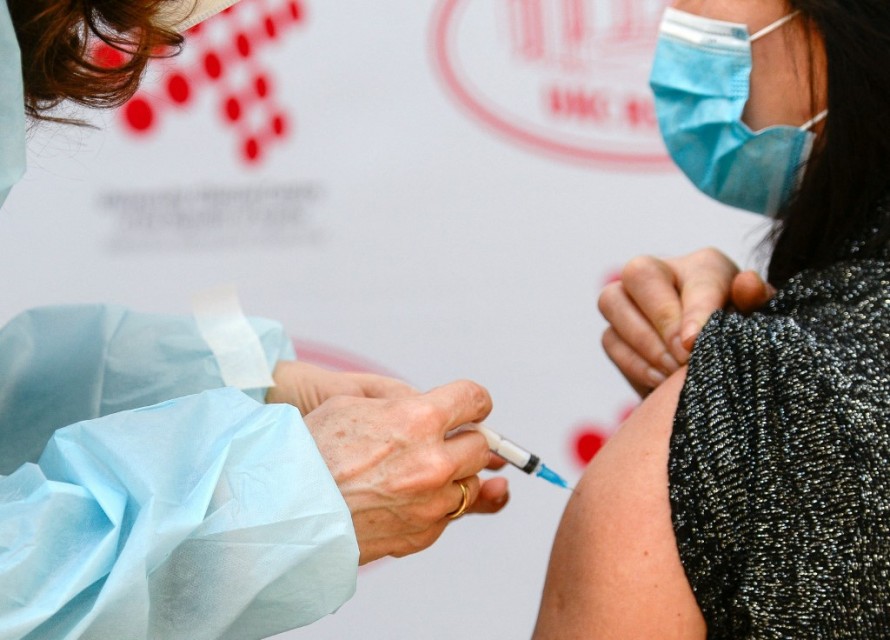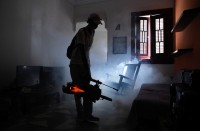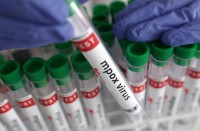
by Paul RICARD and Jean-Philippe CHOGNOT
Agence France Presse
With several Covid-19 vaccines either being rolled out or under trial, here is a rundown of the various stages of their development.
On the market:
PFIZER/BIONTECH
The mRNA vaccine developed by US pharma giant Pfizer and German start-up BioNTech is already approved for use in the European Union, the United States, Canada, Britain and several other nations.
Clinical trials showed the vaccine — which delivers instructions to the body to help the immune system identify and destroy Covid-19 molecules — to be 95 percent effective in preventing illness and hospitalisation.
In the real world, it has proven even more successful, the drugmaker said Thursday, reporting 97 percent effectiveness in blocking serious forms of Covid-19 in Israel, where more than half the population has been fully vaccinated.
MODERNA
The US-made mRNA vaccine, with a 94.1-percent efficacy rate, has been approved for use in the EU, North America, Britain, and several other nations, including Israel and Singapore.
ASTRAZENECA/OXFORD
This more classic viral vector vaccine — developed by the University of Oxford and Anglo-Swedish pharmaceutical company AstraZeneca — is authorised for use in the EU, Britain and India, where it is marketed under the name “Covishield”.
It was shown to be 60 percent effective in trials, but has proven to have a much higher success rate in those countries where it has been widely used.
It is also far cheaper, as well as easier to stock and transport than mRNA vaccines.
But the vaccine has been plagued by problems — stemming from poor communications, inaccurate reporting and ostensible links with side-effects — since before its roll out even began.
Most recently, its use has been suspended by national health authorities in Denmark, Iceland and Norway following reports of a possible link with blood clots.
The European Medicines Agency (EMA), however, said on Thursday that “there is currently no indication that vaccination has caused these conditions”.
JOHNSON & JOHNSON
Another viral vector vaccine, the Johnson & Johnson jab became on Thursday the fourth to be authorised in the European Union. It has also been greenlighted in the United States, Canada and South Africa, which began administering it as early as mid-February.
The vaccine showed an overall efficacy of 66 percent in clinical trials, and of 85 percent against serious illness.
SPUTNIK V
Russia’s vaccine works in a similar way to the AstraZeneca/Oxford jab, but has a 91.6-percent efficacy according to trial results.
More than a dozen nations have authorised its use, including Belarus, Armenia, Iran, Algeria, Argentina, South Korea and Venezuela.
Its makers have begun the process of asking for approval from the EMA. Hungary, Slovakia and Czech Republic are the only EU member states to have started administering doses.
SINOPHARM
Two vaccines developed in China use the traditional technique of injecting the deactivated virus in order to trigger an immune response.
Along with the United Arab Emirates, Hungary, Cambodia, Peru and Zimbabwe have all started administering the vaccine, which its makers say is 79 percent effective.
SINOVAC
The other Chinese-developed vaccine uses a similar technique and is authorised in China, Chile, Brazil and Turkey.
Others nations, including Ukraine and Uruguay, have pre-ordered doses.
The makers say it is 50 percent effective overall against Covid-19 (and 80 percent effective against severe illness), but trial results have not yet been made public.
BHARAT BIOTECH
This inactivated virus vaccine is used currently in India.
CANSINO
A Chinese-made viral vector vaccine was authorised for use in Mexico last week, but has not yet been administered to the public.
In the pipeline:
NOVAVAX
This American vaccine is under rolling review by the EMA, which has the ultimate say on EU medical authorisations.
It is based on “sub-unit” proteins that trigger an immune response without delivering the whole virus. The makers say it is 89.3 percent effective.
CUREVAC
The German vaccine entered EMA review last week. It uses similar technology to the Moderna and Pfizer/BioNTech jabs.
Still in development:
The World Health Organization says there are currently 69 vaccines against the novel coronavirus in human trials.
An additional 180 candidate vaccines are under development, but have yet to begin testing on humans.
Virus variants:
Several studies have shown that vaccines in use are no less effective against the so-called English variant, which is both more contagious and more lethal.
But variants that emerged in Brazil and South Africa that share one or more key mutations may be able to evade vaccines more easily.
Which is not to say that they don’t work at all, experts say.VID
Even if, for example, the Johnson & Johnson vaccine is a little less effective against the South African variant overall, it seems to protect against severe illness as well as it does for the original variant it was designed to block, according to the US Food and Drug Administration (FDA).
In any event, manufacturers are already working on modified vaccines against the new variants and others that might come into being.
On Wednesday, Moderna announced it was starting clinical trials to test a modified vaccine against the South African variant.
© Agence France-Presse








